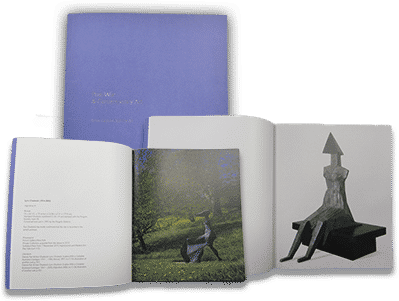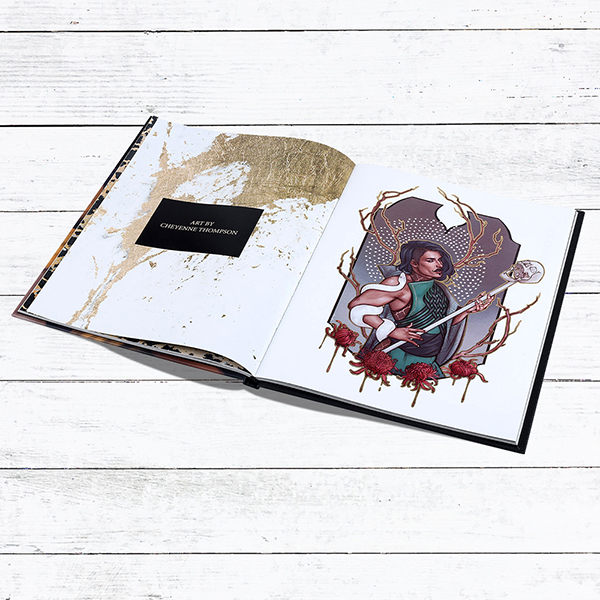How to Choose the Right Paper for Your art book
Discover the Crucial Guide to Art Book Printing for Aspiring Artists and Publishers
As an aspiring artist or author, understanding the subtleties of art book printing is vital to bringing your vision to life. You'll require to take into consideration different variables, from choosing the ideal kind of book to guaranteeing shade accuracy and choosing ideal products. Each decision affects the end product significantly. What are the key elements you should focus on to produce a magnificent art book that truly represents your work?
Understanding Different Sorts Of Art Books
When you dive right into the globe of art publications, you'll swiftly uncover that they come in different forms, each tailored to various creative expressions and audiences. Coffee table publications usually showcase magnificent visuals, perfect for casual browsing, while essays dive deep right into a specific musician's job, giving context and understandings. If you want details art activities, event magazines use in-depth paperwork of shows, featuring essays and critiques.
For instructional purposes, art guidebooks and strategy books direct you through various tools and designs, making them necessary for striving artists. Restricted version or artist books obscure the lines in between art and literature, often including distinct design components or handcrafted features. Recognizing these types assists you determine what reverberates with you and what may best fit your audience. Each style serves its objective, and knowing their differences can enhance your art book trip.
Picking the Right Paper and Materials
Choosing the right paper and products can greatly influence the total quality and feel of your art book. Begin by considering the sort of art work you have. For dynamic shades and intricate details, select a glossy surface or a heavyweight matte paper that boosts visual depth. If your work includes softer tones or appearances, a natural or uncoated paper can supply a cozy, inviting touch.
Consider the weight of the paper, as well. Thicker alternatives often provide a more expert look, while lighter documents can lower printing prices. Do not forget concerning the binding products; a tough cover can shield your web pages and contribute to guide's visual.
Ultimately, take into consideration sustainability. Green alternatives are obtaining appeal and can mirror your worths as an artist. By thoroughly selecting your paper and products, you'll assure that your art book not only looks terrific however also really feels unique in the hands of your visitors.

Choosing the Finest Printing Strategies
When it pertains to printing your art book, picking between countered and electronic printing can significantly affect your final product. You'll additionally wish to take into account exactly how paper quality influences the overall feel and look of your art work. Let's discover these key printing methods to discover the most effective suitable for your project.
Balanced Out vs. Digital Printing
While both countered and electronic printing have their benefits, picking the appropriate strategy for your art book can substantially impact the last item. Countered printing offers top quality images and dynamic colors, making it perfect for larger print runs. Ultimately, your choice should align with your artistic vision and circulation strategy, ensuring that your art book mirrors the top quality you want.
Paper High Quality Considerations
Selecting the best paper quality can greatly boost the aesthetic appeal and responsive experience of your art book. Beginning by thinking about the weight and texture of the paper. Much heavier paper usually feels more glamorous and can better display lively colors and intricate details. For prints, a glossy finish can make pictures pop, while a matte coating provides a softer, extra refined look. Do not fail to remember regarding the paper's brightness; brighter sheets can boost shade accuracy and comparison.
Following, consider the sustainability of your selection. Eco-friendly alternatives are becoming progressively prominent and can interest environmentally-conscious viewers. Demand examples to see exactly how different papers work with your anonymous artwork, guaranteeing the last product reflects your vision completely.
Making Sure Color Precision in Your Prints
To achieve magnificent prints, you require to focus on shade precision from the start. You'll desire to make use of color calibration methods to verify your display and printer are in sync. Furthermore, proofing your job prior to the last print run can aid capture any type of discrepancies, ensuring your art looks simply as you pictured.
Shade Calibration Strategies
Assuring color precision in your prints starts with effective color calibration techniques that aid keep consistency between your digital pictures and final printed items. Next off, pick a shade profile fit for your printing process, like CMYK for print products. By regularly applying these techniques, you'll boost the total high quality of your art prints and far better communicate your creative vision.
Proofing for Precision
While you might assume your electronic images are all set for print, proofing is important for accomplishing shade precision. Before dedicating to a full print run, always request an evidence from your printer. This enables you to see how colors translate from screen to paper. Contrast the evidence with your calibrated screen to identify any kind of inconsistencies. Take note of saturation, brightness, and hue, as these aspects can significantly impact your last product.
If changes are needed, communicate clearly with your printer concerning your wanted outcomes. Don't think twice to demand several evidence if required; it deserves the financial investment to obtain it right. Inevitably, extensive proofing warranties that your art work is stood for as you visualized it, keeping your creative stability throughout the printing procedure.

Creating Layouts That Enhance Your Art Work
When you make layouts for your art book, it's necessary to contemplate just how each component communicates with your art work. Objective for an equilibrium in between visuals and text, guaranteeing neither overshadows the various other. Usage white space purposefully; it offers your art work space to take a breath and accentuates its details.
Consider the circulation of your book. Prepare pictures in such a way that guides the reader's eye, developing a story or thematic development. art book. Vary the sizes and alignments of your art work to keep the layout dynamic and interesting
Select font styles that enhance your artwork without distracting from it. Maintain message concise and relevant, providing context or understanding that improves the audience's experience.
Finally, examination various layouts. Publish samples to see how the layouts equate on paper, and readjust as needed. By thoughtfully making your designs, you'll create an aesthetically appealing art book that resonates with your target market.
Binding Options for a Specialist Complete
Choosing the right binding alternative can considerably impact the total presentation of your art book. You'll intend to take into consideration both looks and toughness when making your choice. Popular alternatives include excellent binding, which provides a streamlined look and is best for thicker books; saddle stitching, perfect for smaller pamphlets; and spiral binding, which allows published here web pages to lay flat for simple watching.
If you're aiming for a costs feeling, situation binding is an excellent option, giving a durable cover and a specialist look (art book). Don't neglect about the cover product; alternatives like cloth, natural leather, or a shiny finish can raise your book's allure
Whatever option you select, see to it it enhances your artwork and improves the viewers's experience. Take your time to consider the advantages and disadvantages of each technique, so your last item reflects the high quality of your innovative vision.
Preparing Your Apply For Print Readiness
To guarantee your art book is print-ready, you'll need to pay close attention to submit prep work. Begin by establishing your paper dimension to match your preferred print measurements.
Think about creating an evidence to examine before the last print run. Complying with these steps will certainly assist you achieve a sleek, expert art book.
Frequently Asked Inquiries
What Is the Typical Cost of Publishing an Art Book?
The average cost of publishing an art book varies, yet you can expect to pay anywhere from $5 to $20 per duplicate, depending upon factors like dimension, paper quality, and printing quantity.
Just How Can I Discover a Reliable Printing Company?
To discover a trustworthy printing he said company, beginning by researching on-line reviews and asking other artists for suggestions. Contrast quotes, inspect profiles, and connect your demands clearly to ensure they recognize your vision and top quality expectations.
What Is the Normal Turn-around Time for Printing?
The regular turnaround time for printing differs however generally varies from one to four weeks. Elements like task complexity and volume can affect this. Always confirm with your selected printer for details timelines and expectations.
Can I Publish My Art Book in Limited Quantities?
Yes, you can absolutely print your art book in restricted amounts. Many printing business use short-run options, allowing you to create simply the number you require, making it simpler to take care of expenses and supply.
What Lawful Considerations Should I Know for My Art Book?
You must take into consideration copyright, licensing agreements, and design launches when developing your art book. Make particular you have the right to utilize all pictures and message, shielding on your own from potential legal issues in the future.